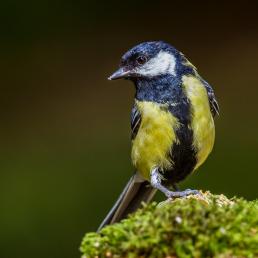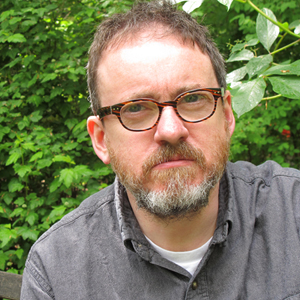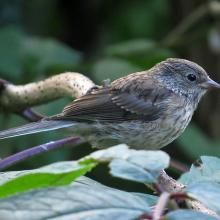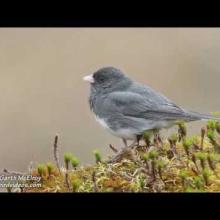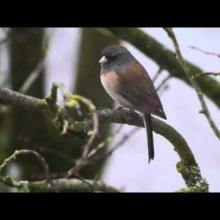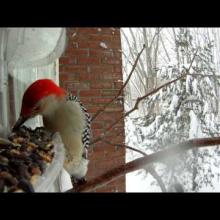

Join BirdNote tomorrow, November 30th!
Illustrator David Sibley and actor H. Jon Benjamin will face off in the bird illustration battle of the century during BirdNote's Year-end Celebration and Auction!
Birds have been living near humans for a long time. But only during the past 5,000 years have birds and humans shared space in cities and towns. “What we’ve done is create a new place where birds are under intense natural selection — from our activities,” says John Marzluff, Professor of Wildlife Science at the University of Washington in Seattle. Marzluff says evolutionary changes can happen in just a few decades of living with humans. In his book, Welcome to Subirdia, he cites as evidence a study of Dark-eyed Juncos conducted by Pamela Yeh.
BirdNote®
Suburbs, Juncos, and Evolution
Written By Dominic Black from an interview with Professor John Marzluff
This is BirdNote.
[Song of the Dark-eyed Junco, Macaulay 85241]
Here's a really cool story. So birds have been living in proximity with humans for a very long time. But it's only in the last 5,000 years or so that it's been in cities or towns or built-up areas.
Marzluff: "What we've done is we've created a new place where birds are under intense natural selection from our activities."
John Marzluff's Professor of Wildlife Science at the University of Washington in Seattle. He says evolutionary changes can happen in birds even after just a few decades of living with us.
Marzluff: "Pamela Yeh studied this in San Diego, and what Pamela found was that the amount of white in the tail of juncos has decreased as they've colonized suburban areas. And this is a genetic and a naturally selected response. The reason it seems to occur - the hypothesis - is that in the wild lands, juncos typically just get to breed once because it's a harsh climate in the mountains. And so there's selection by females for males that can be aggressive and defend a space for their female to breed in."
[Song of the Dark-eyed Junco Macaulay 85241]
Marzluff: "But in the suburban areas, that's not the case. The breeding season is really long - females might get off three or four broods of young."
So their evolution's in overdrive…
Marzluff: "And they favored males that are less aggressive and more attentive to their young. And the corollary of being an aggressive junco is how much white you have in your tail."
For BirdNote, I'm Mary McCann.
###
Song of the Dark-eyed Junco [85241] recorded by W L Hershberger, provided by The Macaulay Library of Natural Sounds at the Cornell Lab of Ornithology, Ithaca, New York. Recorded by
BirdNote’s theme music was composed and played by Nancy Rumbel and John Kessler.
Producer: John Kessler
Executive Producer: Dominic Black
© 2015 Tune In to Nature.org April 2015 Narrator: Mary McCann
ID# marzluffj-subirdia-03-2015-04-21 marzluffj-subirdia-03
